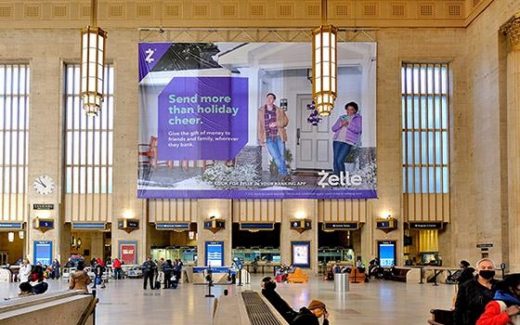Big Country: Zelle Cashes In On DOOH Screens Everywhere
Big Country: Zelle Cashes In On DOOH Screens Everywhere
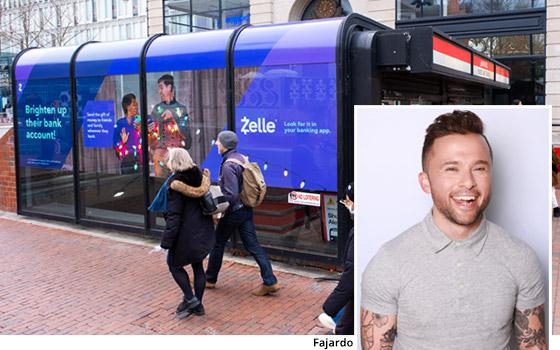
Digital Out of Home (DOOH) advertising is about to boom for all of the obvious reasons. LED screens are cheap and light enough to go on any surface. Connectivity is now comprehensive. Mobile tracking schemes make interactivity, measurement, and accountability in the channel ever more sophisticated. DOOH’s potential remains to be seen but from dynamic billboards to gas pumps and charging stations, gym walls and building lobbies, good luck ever feeling off the grid again.
As Joshua Fajardo tell us this week, finding the right screens in the right time and place seems to have the power to build top of mind awareness and at the same time compel specific behaviors in well-targeted moments. He is Senior Director of Brand Marketing at Zelle, the payment and money management service that was formed by a number of the major banks. It competes with many of the DTC mobile money apps. You can listen to the entire podcast at this link.
Josh will join us live at MediaPost’s first Digital Out Of Home Insider Summit on Feb. 19-22 in La Jolla, CA. where we will be exploring with brands like Zelle what they have learned so far about leveraging an emerging country of screens everywhere.
MediaPost: Zelle is in that peer-to-peer payment space but is actually structured very differently from Venmo and Cash App.
Josh Fajardo: The main differentiator when it comes to Zelle is that it exists in pretty much everyone’s bank app. We cover about 97% of Americans today via 1,800 different financial institutions. For these folks who are bank customers Zelle exists within their bank app. So, there’s never a need to download a third-party app. And then the thing that we really like to hit on in a lot of our messaging is that when you use Zelle, the money goes directly into your bank account. That’s a differentiating point.
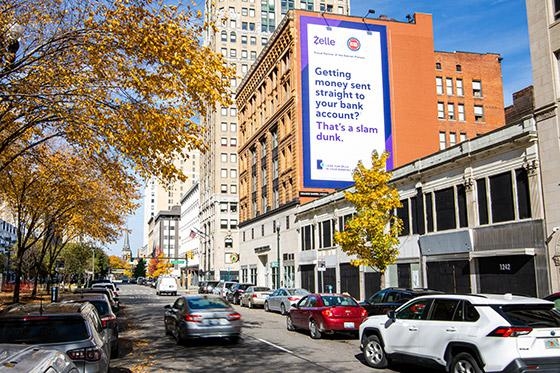
MP: So, all that said, that means you have a unique branding challenge here, especially against the number of the mobile only apps, some of whom, like a Venmo, or even a Cash App, have become verbs, which itself is a daunting brand challenge. So where is the white space for Zelle?
Fajardo: You mentioned two of our core competitors, but the space goes back even further – when eBay launched, having PayPal in there. And you said it right; it’s daunting. We have this competitive set that vastly outspends us. We have an inherent benefit in having that big bank network that allows us to create a broad base of reach in and of itself, through bank owned and operated channel. That’s an inherent advantage. We have that owner bank communication that really raises our frequency.
A challenge for our brand is breaking through that perception that it only exists in my bank app, or for customers of my bank. So, for us the challenge is kind of twofold. It’s overcoming that perception of ubiquity, and making sure people know that, hey, almost regardless of where you bank, I can send you money, and it’ll go directly in your bank account.
To your first point around the competitive set, they’re very much in tune, it seems like, with embedding themselves in culture and going after younger audiences. Whereas we want to play more to that unique strength. We have a target audience base; we call them the connected conductors. They’re folks who live really busy lives. They have networks whether that’s social through work and friends, but also like older parents, that they may have, and they might be parents themselves. For us it has been about figuring out a way to engage those folks who really think of their financial institution pretty fondly. So, the messaging there kind of is twofold. You don’t have to worry about downloading another app. And then, in terms of all the bells and whistles, we know that they really value simplicity, and they need to get their tasks done efficiently. So, our service really plays to that strength or to that kind of priority, for those folks where it’s like, hey I need to send money and gone into that person’s account. I don’t have to worry about it much.
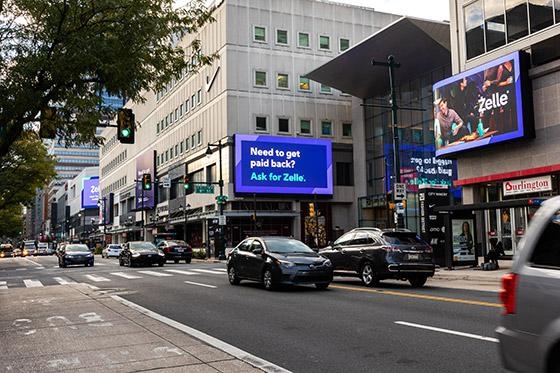
MP: Even though you had all of these banks behind you, didn’t come in with spray and pray mass media buys. You have been taking a much more targeted approach.
Fajardo: Absolutely. The consortium of our owner banks got to be as big as they did through a lot of very efficient means for being very responsible with their spends, and especially when it came to launching a new brand in a hyper competitive space.
We did come out with a Super Bowl pregame ad that we ran to try to break through and insert ourselves in that cultural lexicon. But over the course of time, and especially with all the changes that have happened in our economy, we really have to be focused on where we can make the greatest inroads and the biggest ripple effect in terms of recruiting more users into enrolling for the service and actually transacting. But now we are looking at places where we can be really relevant and stay top of mind. So, if you and I are grabbing a drink after this podcast, if you see an out of home, and you’re like, oh yeah. The use case is happening in the moment, and this is the top of mind. So, we try to play to that as well as making sure that we’re appearing in ways that are meaningful for our target audience.
MP: Give us an overview of the ways you use out of home and how you’ve been evolving towards more digital out of home.
Fajardo: We love the channel! Over the five years that we’ve been promoting this brand, out of home really is consistent in its ability to drive brand metrics all up and down the funnel. So, it tends to be a core of our plans.
We start thinking about digital placements as frequency building placements, a variety of both brand messaging but hyper relevant either time of day, venue, location-based messaging that adds to our core brand messaging. This is a logical practical service that’s advertising to me. But now reinforcing that messaging through frequency with more in the moment type of messaging that’s like, actually, I am at the Kentucky Derby, and this is a funny bit of line copy. And now I make the connection. Of course, I can pay my friend back for those drinks.
So, our digital approach did allow us to be more nuanced to particular markets to particular use cases, time of day, in a way that some of our other channels may not have that in the moment type of ability because we love storytelling. We love the emotional connection piece, but we really look at out of home with that added frequency in the moment that would make sense for right now.
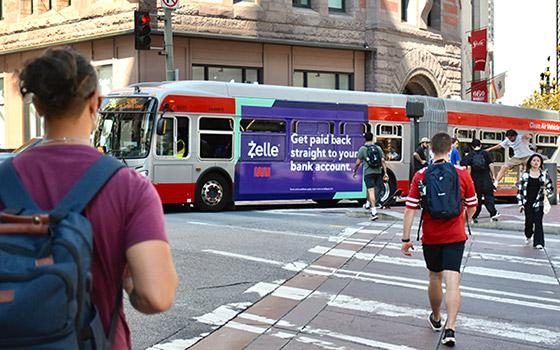
MP: I do want to talk about the Kentucky Derby example, which is kind of cool, but just generally, as you say, this allows you to move into the markets that don’t necessarily have those big splashy placements and impressions.
Fajardo: I’ll give you a practical example of the change that we’ve deployed when it comes to digital and programmatic out of home. When we think of driver commuter markets, back a few years ago the most efficient way to get there was to roadside billboards. There’s lots of them, and you can really reinforce frequency that way. So, over the past couple of years, with more digital canvases emerging in these commuter markets, we still do roadside billboards, but now it’s the street level kiosks. It is screens within apartment complexes. It is some of the high impact units that I mentioned, and we’re even talking gym screens at this point. So, there’s so many social kinds of areas that folks are spending their time. When I think about the static billboard on the highway, that was great for just reinforcing a brand message. But now we’re getting more nuanced to this space. If we’re in a city center around lunchtime we’re using a lunch use case. If that city center has a music venue around it where we know shows are happening in the evening, that messaging will then flip to concert use cases.
So, it’s dynamic, and I think for me as a consumer it’s always nice when I feel like brands are actually engaged with what I’m doing, and how I’m spending my time. So those types of nuance screens and day part targets are something that’s really exciting for us to play with.
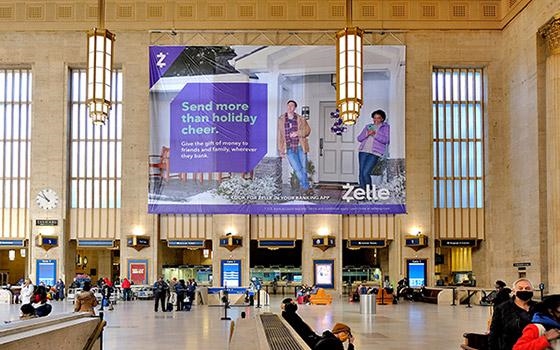
MP: Would you get that granular in terms of targeting and messaging day parting on a local level? What kind of measurement are you using to measure impact?
Fajardo: I feel really fortunate that we’ve got such a nice suite of tools at our disposal to understand at the brand level and at the business level, are we making the types of inroads that we want to with the audiences that we’re going after. And we’re talking about brand metrics here, everything from awareness to consideration in time, favorability at the big, broad level. And then for our actual campaigns we work with the third-party platform to understand the different impacts channel across channel, market across market, creative across creative. And that’s a little bit tighter in terms of granularity by channel and by creative.
But then, when it comes to digital programmatic, our agency has been wonderful in helping us launch their brand studies that do get to the individual market level, creative messaging level. We always want to look at things holistically. Are we making the biggest effects of the biggest audience? But then from a media performance and measurement standpoint being able to say, hey, we’re actually not going to be on apartment screens next time you do a programmatic initiative, because that happened to not have done great for us. We’ll continuously optimize those plans, but it’s great to have that level of detail, because all these markets are so different. All the inventory is so different, like culturally, as we move throughout the country market to market people’s values, obviously change a lot. So out of home is a really exciting space for me because it’s like the gift that keeps giving in terms of learning markets placements, what people care about, because as a country we’re such a broad swath of folks.
(33)

